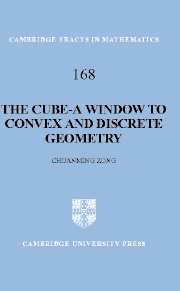Preface
Published online by Cambridge University Press: 14 August 2009
Summary
What is the simplest object in an n-dimensional Euclidean space? The answer should be a unit cube or a unit ball. On the one hand, compared with others, they can be easily described and intuitively imagined; on the other hand, they are perfect in shape with respect to symmetry and regularity. However, in fact, neither of them is really simple. For example, to determine the density of the densest ball packing is one of the most challenging problems in mathematics. As for the unit cube, though no open problem is as famous as Kepler's conjecture, there are many fascinating problems of no less importance.
What is the most important object in the n-dimensional Euclidean space? The answer should be the unit cube and the unit ball as well. Since, among other things, the unit ball is key to understanding metrics and surface area, and the unit cube is key to understanding measure and volume, in addition, a high-dimensional unit cube is rich in structure and geometry. Deep understanding of the unit cube is essential to understanding combinatorics and n-dimensional geometry.
This book has two main purposes: to show what is known about the cube and to demonstrate how analysis, combinatorics, hyperbolic geometry, number theory, algebra, etc. can be applied to the study of the cube.
The first two chapters discuss the area of a cross section and the area of a projection of the cube.
- Type
- Chapter
- Information
- The Cube-A Window to Convex and Discrete Geometry , pp. vii - viiiPublisher: Cambridge University PressPrint publication year: 2006

